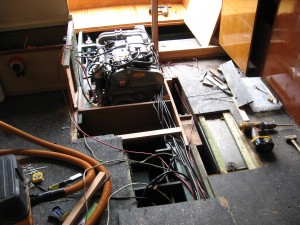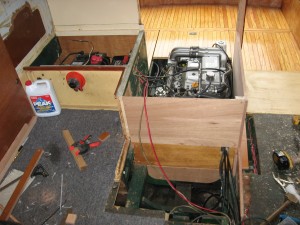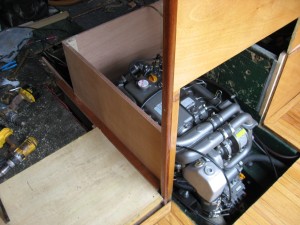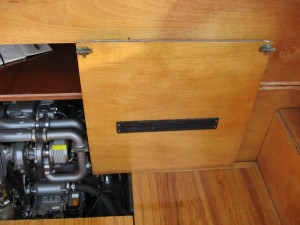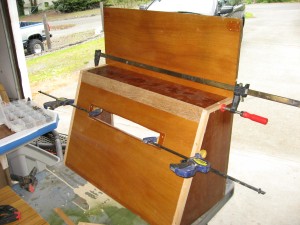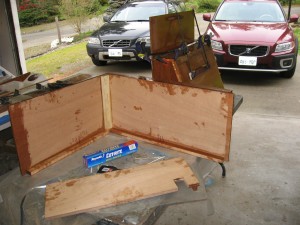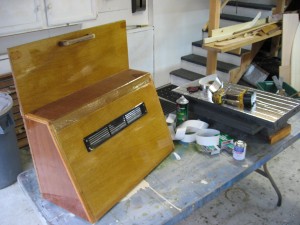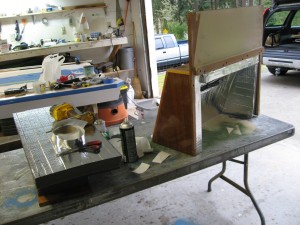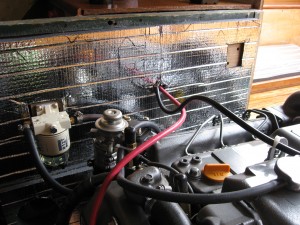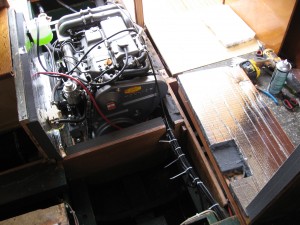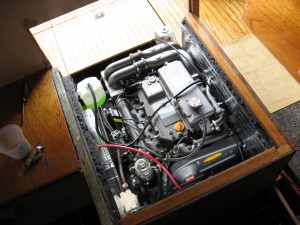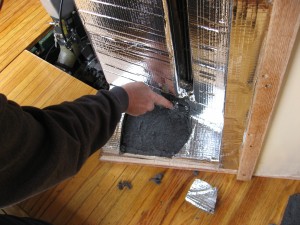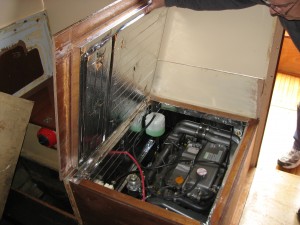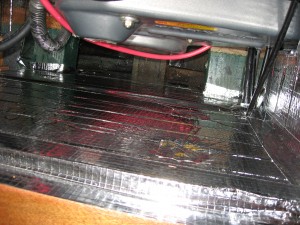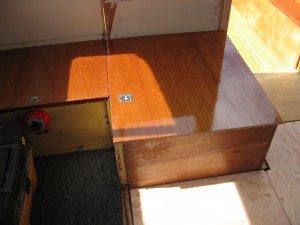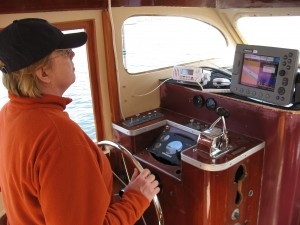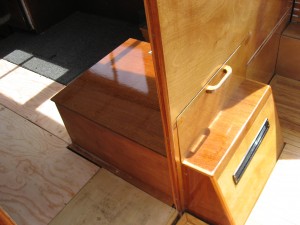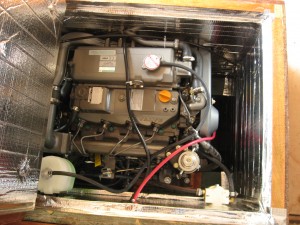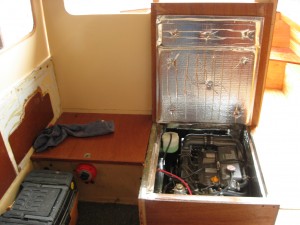With the new Yanmar turbodiesel in and running well, it’s time to rebuild the engine compartment. I have to make it smaller to to accommodate the shorter length of the Yanmar. This will give us more cabin room. I also have to install some 2″ thick Soundown brand soundproofing material to quiet down the high-revving diesel clatter. First I need to route all the wires, control cables and hydraulic lines for the steering.
I build the new engine box out of mahogany plywood left over from the decks and cabin restoration.
While the engine is 18″ shorter than the old Chrysler flathead six, it extends aft of the cabin bulkhead, so I need to build a small box to cover the exhaust mixing elbow and control stanchions.
Using the old engine access panel, I do some cutting, modifying and fitting and come up with a suitable solution.
I fabricate the forward and left side of the engine compartment, the right side of the compartment will be the existing wall, cut shorter about 18 inches.
The piece with the notch is the lower forward part of the box, notched away for the control cables and hydraulic lines.
Next, I cut the insulation on the bandsaw into pieces suitable for installation.
Using 3M heavy duty contact spray adhesive and 2.25″ screws and large area washers, I fasten the soundproofing material to the inside surfaces of the engine compartment.
I fabricate 2″ thick standoff blocks for the fuel filter and coolant reservoir, then tape over the cutouts with some Soundown reflective mylar tape.
I cut and fit and eventually get everything glued, screwed, taped and fastened together.
The box is almost done, some final taping to be done.
I cut away and inch of the foam’s thickness to provide clearance for the exhaust mixing elbow. The soundproofing material is dense, closed cell foam, with a barium oxide layer sandwiched between the two 1″ thick pieces, making the overall thickness of the foam sandwich about 2″. Below, I’m cutting away the outer 1″ foam layer – down to the barium oxide layer.
Aft engine cover in place.
Top cover was cut to the shorter length, modified and insulation fastened to the underside of the cover.
Below is a photo looking down the front of the engine showing three pieces of plywood and foam, forming a solid wall of sound barrier all the way down to the bilge.
Below – the completed engine compartment – took all day to get this put together. Time now for a short cruise.
And what a difference!! Much quiter – we can actually talk at a normal level now.
Some aditional work remains, the folks on the WoodenBoat forum said we have to seal every crack and they’re right. I can put rags in some small spots where noise is leaking out and it makes a huge difference. It will be easy to do some final sealing in certain areas.
Looks and sounds much better!
Cruised over to the Foss Waterway Marina to buy some diesel and pump out the holding tanks – nice day for a cruise and the Schooner fleet was at Foss today. That was fun!

